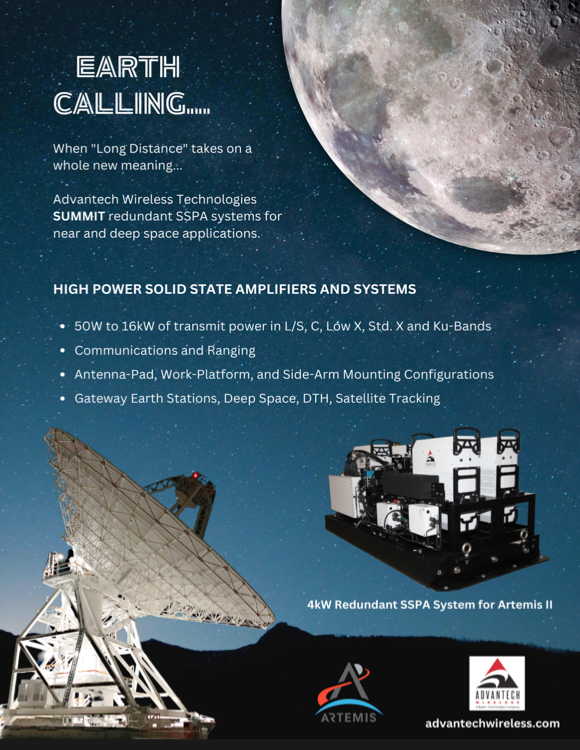Over the last 70 years, advancements in nuclear technology, space exploration and international law have paralleled and informed each another. This article looks at three dramatic developments in the course of that intertwined history.
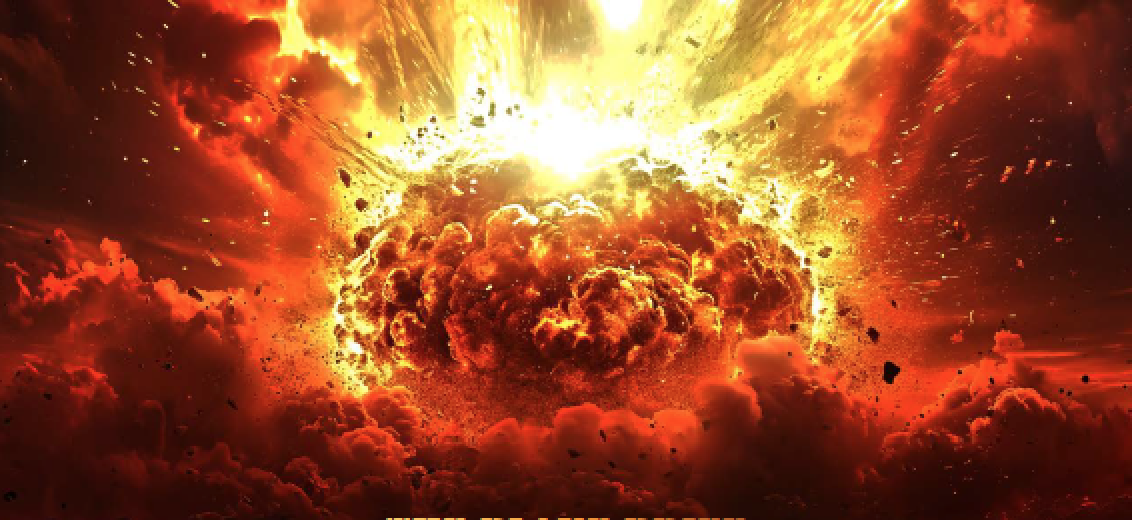
First, Project A119, which was the U.S. Air Force (USAF)’s ill-fated scheme to test nukes on the moon and the initial emergence of international limits on nuclear weaponry in space.
Next, Kosmos 954, the Soviet satellite disaster that spread uranium across northern Canada and prompted international blowback against mixing nuclear and space.
Finally, Project MEP, America’s ambitious plan to reach — and return from — the Red Planet, and the legal, regulatory, and perhaps nuclear support necessary to make that a reality.
With the Cold War focus on building bigger and bigger nuclear weapons came the need for bigger and bigger nuclear tests. The tests served both scientific and political purposes, as the U.S. and U.S.S.R. vied to achieve not only the greatest technological advances, but also the greatest displays of power.
For example, in Operation Fishbowl (view the YouTube video of this historic program, courtesy of Atomic Test Channel) the U.S. blew up five different nuclear bombs 400 kilometers over the Pacific (one of which, “Starfish Prime,” the USAF seriously considered even exploding a hydrogen bomb on the lunar surface. Although no mushroom cloud would rise from a surface with barely any atmosphere, the secretive “Project A119” was designed so that an explosion of dust and debris would appear on the “Terminator Line” between the dark and visible sides of the moon, such that the explosion would still be visible to an earthbound observer’s naked eye.
A young Carl Sagan himself was tasked with running the visibility calculations. Apart from Project A119’s (arguably thin) scientific goals, the experiment was conceived as a dramatic political response to Sputnik. Not to be outdone, the Russians started planning their own lunar blast, code named “E4.”
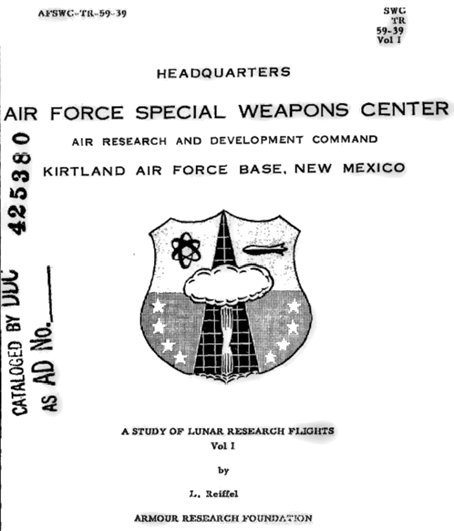
Fortunately for Neil Armstrong, the U.S. decided that planting (American) human footprints on the lunar surface would be a better use of resources than blasting out new lunar craters. The shift toward the Apollo missions mirrored an international consensus toward more peaceful uses of space.
As President Kennedy put it, “We choose to go to the moon in this decade and do the other things, not because they are easy, but because they are hard.” — and reaching limits on nuclear hazards was certainly one of those difficult but worthwhile “other things.”
After a remarkable campaign of public and private diplomacy (including private letters from President Kennedy directly to Russian Premier Khrushchev), Washington and the Kremlin came to terms on reasonable nuclear testing limits.
By 1963, the U.S. and U.S.S.R. had signed the Limited Nuclear Test Ban Treaty, agreeing to forgo nuclear bomb testing underwater, in the atmosphere as well as in outer space. Four years later, nearly every U.N. Member State agreed: “not to place in orbit around the earth any objects carrying nuclear weapons or any other kinds of weapons of mass destruction, install such weapons on celestial bodies, or station such weapons in outer space in any other manner.”
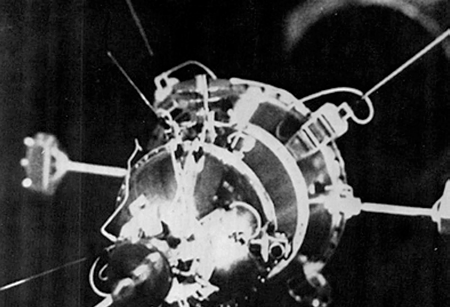
Soviet photo of the Kosmos 954 satellite prior to launch.
Image is courtesy of historicwings.com.
The 1967 Outer Space Treaty can truly be regarded as an arms control treaty at its core. So, in a sense, nuclear technology motivated the first and arguably the most important precept of international space law.
In the years that followed, while escalating warhead stockpiles received headlines, teams on both sides of the Iron Curtain were finding ways to harness nuclear technology for smaller scale space undertakings. Radioisotope thermoelectric generators quietly became a reliable power source for space operations, using the decay heat of plutonium-238. However, only a decade after Earth’s leaders agreed not to send nuclear bombs up into space, nuclear danger found its return from space back down to the Earth.
In 1978, in a move far more modest than a moon blast and certainly intended to go unnoticed, the Russians decided to power a new spy satellite with 110 pounds of enriched uranium. Unfortunately, they lost control of Kosmos 954 early on, resulting in satellite debris strewn across Canada’s Northern Territories and Nunavut. Despite the heroic recovery efforts of “Operation Morning Light” to recover the highly radioactive waste, the natives of the region have since suffered increased cancer rates.
The crash of Kosmos 954 was not the first space related nuclear accident, but it became the accident the public most remembered. There were relatively “successful” failures on the American side, as well: in 1964, plutonium aboard an aborted launch dispersed into the upper atmosphere; in 1968, the U.S. recovered a failed satellite’s nuclear fuel container and even reused its plutonium; and in 1970, the nuclear generator intended to power lunar-based instruments for the Apollo 13 astronauts ultimately sunk to the depths of the Pacific, with no release detected.
Nevertheless, the Kosmos 954 spectacle of millions in U.S. and Canadian taxpayer money being used to shovel radioactive space junk from the snow was too vivid of a public relations disaster to be easily overlooked. At the time, President Jimmy Carter said, “If we cannot evolve those fail-safe methods, then I think there ought to be a total prohibition against [nuclear-powered] Earth-orbiting satellites. I would favor at this moment an agreement with the Soviets to prohibit Earth-orbiting satellites with atomic radiation material in them.”
On the international legal stage, Kosmos 954 became a significant milestone, as Canada cited the U.N. Space Treaty corpus in its eventual legal claim against the U.S.S.R. Although the two nations never proceeded to litigation, and the U.S.S.R. did not formally accept legal responsibility, the Soviets did ultimately pay $3 million Canadian dollars as partial reimbursement for the cleanup costs.
When the US also lost a (non-nuclear) satellite over Australia, the U.S. followed the Kosmos 954 precedent, acknowledging “[t]here is no question that the United States will pay damages.” In its “Principles Relevant to the Use of Nuclear Power Sources” in Outer Space, the U.N. later recommended that “the use of nuclear power sources in outer space shall be restricted to those space missions which cannot be operated by non-nuclear energy sources in a reasonable way.” In other words, nuclear power was to be the last resort.
In the years that followed, even when it seemed there may be new opportunities for the nuclear and space industries to collaborate, disaster continued to drive the two apart. For example, discussions occurred in the 1990s around the clever (if economically far-fetched) idea of using the expanse of space as a nuclear waste dump, assessing the shuttle missions as an opportunity to rid Earth of spent waste deposits that were piling up. The Challenger tragedy put an end to those discussions.
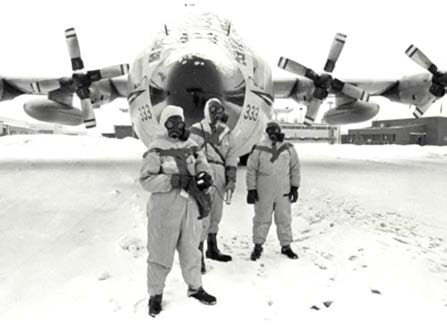
Even as space flight has become dramatically less expensive, the real images of hazmat suits scouring Canada for uranium and exploded launch vehicle remnants have combined to keep the proposal politically unfeasible. While Congress cannot agree on whose constituents should be forced to babysit nuclear waste for the next million years, it seems everyone can agree that we do not want it strapped to a rocket and sent over our heads.
As the world has witnessed a revived interest in all things space, nuclear possibilities have been caught up in the New Space excitement and, once again, legal developments are supporting and informing technological innovation.
With NASA focused on the MEP (Mars Exploration Program) and spacecraft designers are looking for propulsion options more efficient than chemical and more reliable than solar, NASA and DARPA (Defense Advanced Research Projects Agency) have resurrected work on nuclear propulsion systems, previously explored via the Nuclear Engine for Rocket Vehicle Application (NERVA) program, a joint investigation by NASA and the Atomic Energy Commission (AEC) into nuclear propulsion.
A nuclear propulsion system could — theoretically — get humans to Mars in 45 days (as opposed to 9 months) and keep them alive on the hostile planet (à la “The Martian”), in spite of storms that could cut them off from solar power. While getting our men and women to Mars and safely home faster is the “headline” case for nuclear, the implications for the use of nuclear power for the colonization of Mars are far reaching.
Washington is taking note. On the executive side, the Trump White House streamlined the system for approving the launch of nuclear space systems (a broad term meant to cover power, heating, and propulsion). Under the new regulatory review system, which had not been substantially updated since 1977, systems now fall into three tiers.
The tiers are mostly separated by “total quantities of radioactive material based on the A2 value listed in Table 2 of the International Atomic Energy Agency’s (IAEA) Specific Safety Requirements and on the probability of radiation exposure to the public.”
According to then-Director Kelvin Droegemeier of the Office of Science and Technology Policy, the system is designed to “better ensure rigorous risk-informed safety assessment without excessive redundancy or wasted time and cost.”
On the budget side, Congress has delegated “about $100 million annually for NASA to advance nuclear thermal propulsion capabilities with the goal of conducting a future in-space flight test” allowing the agency to make such development a priority.
The government shut down NERVA in 1973 (after spending $1 billion on the program), when “budget cuts and a lack of political will kept concepts for nuclear propulsion on the ground.” Only now, with the renewed ambition to explore further and further away from Earth, has the U.S. developed the political appetite to push this technology forward.
Since 2021, DARPA has been working with commercial partners on DRACO, the Demonstration Rocket for Agile Cislunar Operations program. Just last year, DARPA and NASA announced they will be working together on the next two rounds of the DRACO program, which call for a commercial contractor to design and build a rocket capable of carrying a fission reactor safely into space for testing. The current plan envisions an in-space demonstration during fiscal year 2027.
The U.N., for its part, while not necessarily disavowing earlier concerns regarding nuclear power in space, has come to acknowledge the technology’s importance for space and is actively working to encourage proper regulatory controls. In 2022, the UN “welcomed the fact that some States and an international intergovernmental organization were developing, or considering developing, legal and regulatory instruments on the safe use of nuclear power sources in outer space.”

In November of 2023, the U.N. Committee on the Peaceful Uses of Outer Space, Scientific and Technical Subcommittee recently stated in its draft plan for 2024-2028 that, “Nuclear power sources (NPS) have opened the solar system to exploration, allowing the observation and understanding of dark, distant planetary bodies that would otherwise be unreachable. Nuclear reactor power sources, for habitation purposes and in-space propulsion and power supply of spacecraft, may enable faster and more robust crew and cargo missions to the Moon, Mars and beyond, and scientific missions to the outer solar system. The experience gained during many decades of NPS applications has led to a good understanding of the risks involved and the lessons learned, which provide context for evolving safety practices.”
From the detonation of nuclear bombs in LEO and targets aimed at on the moon, on through the development of international legal accords against using nuclear weaponry in space, and all the way through the political storms of nuclear accidents, there has now emerged a new consensus that our loftier space ambitions cannot afford to keep nuclear on the sidelines.
Time will tell whether the uneasy union of nuclear and space will remain in the public’s good graces long enough to move humans to Mars and then return them to Earth.
References
1 https://www.science.org/content/article/us-tests-ways-sweep-space-clean-radiation-after-nuclear-attack
2 https://www.bbc.com/future/article/20230505-the-crazy-plan-to-explode-a-nuclear-bomb-on-the-moon
3 https://www.bbc.com/future/article/20230505-the-crazy-plan-to-explode-a-nuclear-bomb-on-the-moon
4 https://www.nature.com/articles/35011148.pdf
5 https://www.bbc.com/future/article/20230505-the-crazy-plan-to-explode-a-nuclear-bomb-on-the-moon
6 https://www.history.com/topics/cold-war/nuclear-test-ban-treaty
7 https://history.state.gov/milestones/1961-1968/limited-ban
8 https://www.unoosa.org/oosa/en/ourwork/spacelaw/treaties/outerspacetreaty.html
9 https://world-nuclear.org/information-library/non-power-nuclear-applications/transport/nuclear-reactors-for-space.aspx
10 https://www.cbc.ca/arts/operation-morning-light-podcast-soviet-satellite-exploded-traditional-dene-land-1.6650994
11 https://rps.nasa.gov/about-rps/safety-and-reliability/
12 https://core.ac.uk/download/pdf/72839474.pdf
13 https://www.jstor.org/stable/20692062
14 https://www.unoosa.org/oosa/en/ourwork/spacelaw/principles/nps-principles.html
15 https://scholarship.law.wm.edu/cgi/viewcontent cgi?article=1286&context=wmelpr; See A.J.S. Rayl, Throwing Our Trash Into the Fire, STAR-TRIB. (Minneapolis, Minn.), Apr. 8, 1994, at A14, available in LEXIS, News File, Arcnws Library.
16 https://scholarship.law.wm.edu/cgi/viewcontent. cgi?article=1286&context=wmelpr; See A.J.S. Rayl, Throwing Our Trash Into the Fire, STAR-TRIB. (Minneapolis, Minn.), Apr. 8, 1994, at A14, available in LEXIS, News File, Arcnws Library.
17 https://www.king5.com/article/news/nation-world/nuclear-waste-disposal/507- ae770aa1-41a2-41f6-9bc9-7f4da32d3fd7.
18 Robbins, W. H.; Finger, H. B. (July 1991). An Historical Perspective of the NERVA Nuclear Rocket Engine Technology Program (PDF) (Report).
19 https://www.universetoday.com/159759/nasa-and-darpa-will-be-testing-a-nuclear-rocket-in-space/
20 https://trumpwhitehouse.archives.gov/presidential-actions/memorandum-national-strategy-space-nuclear-power-propulsion-space-policy-directive-6/.
21 https://aerospace.csis.org/what-does-the-trump-administrations-new-memorandum-mean-for-nuclear-powered-space-missions/
22 https://aerospace.csis.org/what-does-the-trump-administrations-new-memorandum-mean-for-nuclear-powered-space-missions/
23 https://ww2.aip.org/fyi/2019/white-house-overhauls-launch-approval-process-nuclear-spacecraft
24 https://www.upi.com/Science_News/2021/10/20/NASA-Congress-Mars-nuclear-propulsion/9971634743017/
25 https://www.universetoday.com/159759/nasa-and-darpa-will-be-testing-a-nuclear-rocket-in-space/
26 Haslett (May 1995). Space Nuclear Thermal Propulsion Program Final Report; Robbins, W. H.; Finger, H. B. (July 1991). An Historical Perspective of the NERVA Nuclear Rocket Engine Technology Program (PDF) (Report)
27 https://aerospace.csis.org/what-does-the-trump-administrations-new-memorandum-mean-for-nuclear-powered-space-missions/
28 Frazier, Sarah; Thompson, Tabatha (25 January 2023). NASA, DARPA Will Test Nuclear Engine for Future Mars Missions.
29 https://www.unoosa.org/res/oosadoc/data/documents/2022/aac_105c_1l/ aac_105c_1l_394_0_html/AC105_C1_L394E.pdf
30 https://www.unoosa.org/res/oosadoc/data/documents/2024/aac_105c_1l/ aac_105c_1l_413_0_html/V2308741.pdf

Curt Blake
Curt Blake, Senior Columnist to SatNews Publishers, is Senior Of Counsel for Wilson Sonsini Goodrich & Rosati. He is an attorney and senior executive with more than 25 years of experience leading organizations in high-growth industries — and more than 10 years as the CEO of Spaceflight, Inc.— at the forefront of the New Space revolution. Curt has extensive expertise in strategic planning, financial analysis, legal strategy, M&A, and space commercialization, with deep knowledge about the unique challenges of New Space growth and the roadmap to success in the that ecosystem.
The views expressed in this article reflect those of the authors and do not necessarily represent the views of their employer and its clients.


